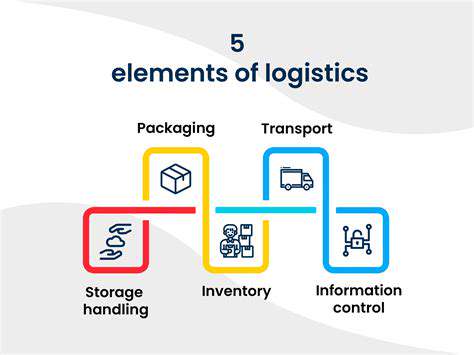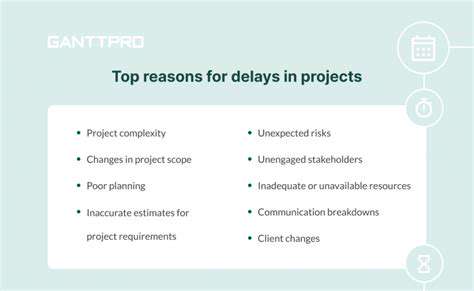Tips for Using Your Phone Abroad Without High Fees
Choosing the Right Plan
Before you even think about downloading apps or making calls, you need to choose the right international data plan. This is crucial for avoiding exorbitant roaming charges. Research different options offered by your carrier, and look for bundles that include data, calls, and texts. Consider how much data you'll likely need during your trip. If you plan on using social media extensively or streaming videos, you'll need a more substantial data allowance than someone who primarily uses messaging apps. Compare prices and features carefully; a seemingly small difference in price can multiply significantly over a longer trip.
Don't just rely on the default settings; actively choose a plan that suits your specific needs and usage patterns. This proactive approach can save you a considerable amount of money compared to simply relying on automatic roaming features, which can be extremely expensive. Research international roaming options from your phone provider in advance and consider adding a temporary international plan if your current plan is not suitable.
Downloading Essential Apps
A significant part of pre-trip planning involves downloading any apps you anticipate needing while abroad. This includes translation apps, currency converters, navigation apps, and local information apps. Downloading these apps before you leave ensures you have access to them even when you have limited or no mobile data. This is particularly important for navigation, as relying on downloaded maps avoids costly data charges while exploring unfamiliar cities.
Be sure to check the app store reviews to see if there are any specific issues or limitations with these apps in your destination country. This will help you avoid any unpleasant surprises or unexpected difficulties when using them.
Setting Up Your Phone for International Use
Before you leave, ensure your phone is properly configured for international use. Check your phone's settings to see if you need to manually select a data provider in the area you are visiting or if your current plan automatically handles international calls and data. This will help you avoid unexpected roaming charges and ensure seamless connectivity. If your phone doesn't automatically handle international calls and data, consider setting up a temporary international plan that's more suitable for your trip.
Activating your phone's international roaming feature if needed is a crucial step in your pre-trip preparations. This ensures your phone will work properly when you're outside your home country. Also, remember to check with your phone provider for any restrictions or limitations on international data or calling plans, which might affect your phone's usage during your trip.
Managing Your Data Usage
Careful data management is key to avoiding high roaming charges. Become familiar with your phone's data usage settings and adjust them accordingly to limit data consumption. Consider setting daily data limits or using Wi-Fi whenever possible. Using Wi-Fi hotspots, public Wi-Fi networks, or hotel Wi-Fi can save you significant money on international data charges. This strategy is especially important if you plan on using data-intensive apps or streaming services during your trip.
Familiarize yourself with your phone's data usage settings. Understanding your daily data limits and usage patterns will be vital for preventing unexpected overages. This proactive approach will help you stay within budget and avoid any surprises when you receive your phone bill.
Optimizing App Usage for International Travel
Planning Ahead for Seamless Travel
Before embarking on your international adventure, meticulously plan how you'll use your phone. This involves researching data roaming options from your carrier, understanding potential roaming costs, and identifying free Wi-Fi hotspots in your destination. Pre-planning your digital needs will minimize surprises and ensure a smoother travel experience, helping you stay connected without breaking the bank.
Investigating local SIM cards is also a crucial step. In many countries, purchasing a local SIM card can offer significantly cheaper data and calling plans compared to international roaming. This is often the most budget-friendly option for extended stays, but be sure to research the best providers and their coverage in the specific areas you plan to visit.
Managing Your Data Usage
Data roaming can quickly drain your phone's battery and your wallet. To avoid unexpected charges, set data usage limits on your phone and actively monitor your consumption. Utilize data-saving features built into your phone's operating system, such as limiting background data usage, turning off cellular data for apps you don't need, and prioritizing Wi-Fi connections whenever possible.
Knowing your data plan's limits and understanding the different data packages offered by your provider is essential. This knowledge will allow you to use your phone effectively without incurring excessive charges. Consider if a pre-paid data option is more suitable for your needs than a traditional data plan.
Utilizing Wi-Fi Hotspots
Leveraging Wi-Fi hotspots is a cost-effective way to access the internet during your travels. Identify reliable Wi-Fi hotspots in your destination, whether at hotels, cafes, or public spaces. Familiarize yourself with the locations and access methods beforehand to ensure seamless connectivity. This will be vital for tasks like checking emails, using navigation apps, and accessing important documents.
Utilize airport Wi-Fi if available, as it can be a lifesaver for staying connected before and after your flight. Many airports have free Wi-Fi, providing a convenient way to manage your travel arrangements and stay in touch with loved ones.
Accessing Navigation Apps Effectively
Download offline maps and navigation data for your destination before you go. This will allow you to use navigation apps without incurring roaming charges. This is especially important in areas with limited or unreliable cellular service. Familiarize yourself with the app's offline features to ensure you can always find your way.
Utilize GPS-enabled apps for directions and real-time updates. This will be crucial for exploring new areas and navigating unfamiliar streets. Be mindful of the app's data usage and consider using offline mode to conserve data during your trip.
Staying Connected with Friends and Family
Plan ahead for communication with friends and family. Consider using messaging apps with free or low-cost international calls and messages. These apps can help to maintain connections without incurring high roaming charges. Research and select the best options for your needs and ensure your contacts are aware of your plans.
Utilizing video calls can be a cost-effective way to stay in touch with loved ones, especially when traveling abroad. Look into video calling options that offer free or low-cost international calls, so you can maintain connections and share experiences in real-time.
Securing Your Mobile Devices
Protecting your mobile devices is paramount, especially when traveling to unfamiliar locations. Review the security settings on your device before leaving and ensure your device is protected with a strong password or biometric lock. Review your phone's security features and make sure they are up-to-date. This will help prevent unauthorized access to your data and personal information.
Consider using a VPN to encrypt your internet connection, especially when using public Wi-Fi networks. This will add an extra layer of security and protect your sensitive data from potential threats. Always be cautious about the Wi-Fi networks you connect to, and only connect to trusted networks.
Managing Your Data and Calls: Smart Choices for Smart Travelers

Data Security and Integrity
Data security is paramount in today's digital landscape. Protecting sensitive information from unauthorized access, use, disclosure, disruption, modification, or destruction is crucial for maintaining trust and avoiding significant financial and reputational damage. Robust security measures, including encryption, access controls, and regular security audits, are essential to safeguarding your data against cyber threats and ensuring its integrity.
Maintaining data accuracy and consistency is equally important. Implementing procedures to validate and verify data entries, along with establishing clear protocols for data updates and revisions, ensures the reliability and usefulness of your information. This proactive approach minimizes errors and ensures that your data accurately reflects the current state of affairs.
Call Management Strategies
Effective call management systems are critical for streamlining communication and optimizing customer interactions. Implementing a robust call routing system, for example, can direct calls to the most appropriate agents, ensuring faster resolution times and improved customer satisfaction. A well-designed call management system can also track and analyze call data, providing valuable insights into customer needs and preferences.
Prioritizing call handling time is vital for customer satisfaction. Establishing clear call handling procedures, including call queuing and escalation protocols, can improve response times and reduce customer frustration. These systems should also include strategies for handling high call volumes, ensuring that customers receive prompt attention even during peak periods.
Optimizing Communication Channels
Beyond phone calls, various communication channels, such as email, instant messaging, and social media, play a crucial role in customer interaction. Integrating these channels into a unified communication platform allows for seamless transitions between different communication methods, providing a more comprehensive and convenient experience for your customers. This approach can improve customer satisfaction and allow for a more efficient handling of inquiries and issues.
Analyzing customer interactions across all channels provides valuable insights into their needs and preferences. This data-driven approach allows you to tailor your communication strategies to better meet customer expectations, ultimately improving satisfaction and loyalty. Understanding customer preferences and adapting strategies accordingly is essential for building strong customer relationships.
Utilizing Technology for Efficiency
Leveraging technology to automate tasks and streamline processes is crucial for optimizing efficiency in managing data and calls. Automating data entry, for example, can significantly reduce manual errors and free up staff to focus on more complex tasks. This automation not only increases efficiency but also reduces the potential for human error.
Employing call recording and analytics tools allows for the detailed analysis of customer interactions. This data can be used to identify areas for improvement in call handling procedures and agent training. Understanding customer interactions through recorded calls allows companies to refine their strategies and procedures for optimal results.
Reporting and Analysis for Improvement
Regular reporting and analysis of data and call activity are essential for identifying trends and patterns. This data-driven approach allows for the identification of areas needing improvement in processes and procedures. By meticulously analyzing data, companies can gain insights into the effectiveness of their strategies and make necessary adjustments for optimal results.
Regular reporting and analysis allows for continuous improvement of your data management and call handling systems. The insights gained can drive strategic decisions, leading to enhanced efficiency, improved customer satisfaction, and ultimately, increased profitability. This ongoing review process ensures that your systems remain relevant and effective in meeting evolving business needs.


![How to Pack a Carry On Only [Minimalist Guide]](/static/images/27/2025-05/AccessoriesandDocuments3AKeepingitCompactandOrganized.jpg)
![Top 10 Adventure Destinations in the World [2025]](/static/images/27/2025-05/ConqueringtheHimalayas3AMountaineeringandTrekkinginNepal.jpg)







![Guide to Visa on Arrival [Where & How It Works]](/static/images/27/2025-06/EssentialDocumentsforVisaonArrival.jpg)